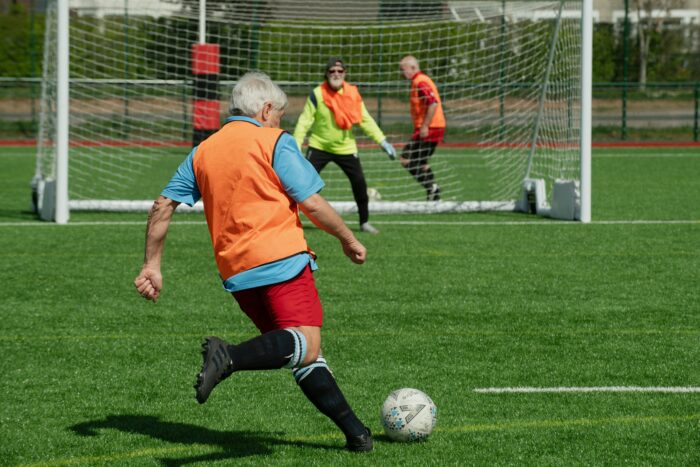Don’t take life sitting down

If retirement finds you sat in front of your telly or computer for hours on end, break it up!
That’s the message from Get Britain Standing – a mass media campaign aimed at raising awareness of the dangers of sedentary working and prolonged sitting time.
Launched more than a decade ago, the campaign has birthed On Your Feet Britain Day – which takes place this year on 24 April.
Dancing is great for health, as is walking
Those of us who spend a significant amount of time sitting down are encouraged to get up and move more, if possible.
We clock up an average of 8.9 hours a day sitting. A growing body of scientific research suggests more than four hours a day can have negative health consequences.
The campaign suggests using TV commercials to get up and walk around. Dancing is great for health, as is walking – and you don’t need special equipment for that.
If you have grandchildren, enjoy active play with them. Here are some other tips for taking a break from sitting:
- stand on the train;
- walk up escalators;
- get off the bus stop earlier;
- do deskwork standing up;
- stand or walk around while on the phone;
- swap some TV time for more active tasks or hobbies.
According to advice agency Independent Living, evidence of the risks associated with extended periods spent sitting down has been gathering since the 1950s.
Some research carried out then discovered that drivers of double-decker buses were twice as likely to have a heart attack as their colleagues who worked as conductors.
The difference was that the drivers spent 90 per cent of their shift sitting behind the wheel, while conductors were heading up and down stairs issuing tickets.
Since the 1970s, researchers have assessed the effects of zero gravity on astronauts, and found they experience accelerated ageing, loss of bone density and muscle mass.
There are even ideas for getting active in a wheelchair
If we don’t make demands on our bones and muscles, they lose condition more quickly than we might realise.
There are even ideas for getting active in a wheelchair, such as – swimming, sitting exercises, wheelchair workouts, wheelchair sprinting, using a rowing machine adapted for wheelchair use and wheelchair sports such as basketball, netball and badminton.
The aim is to raise your heart rate and get warm enough to break a sweat. (Photo: Age Cymru on Unsplash)

